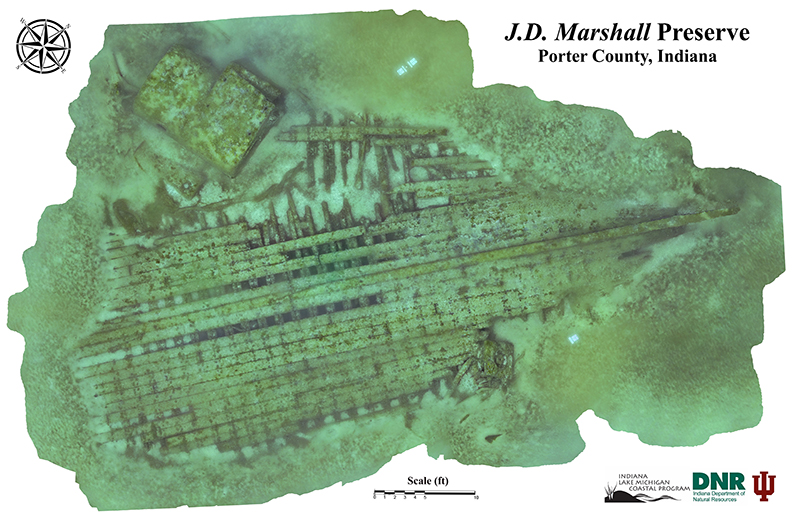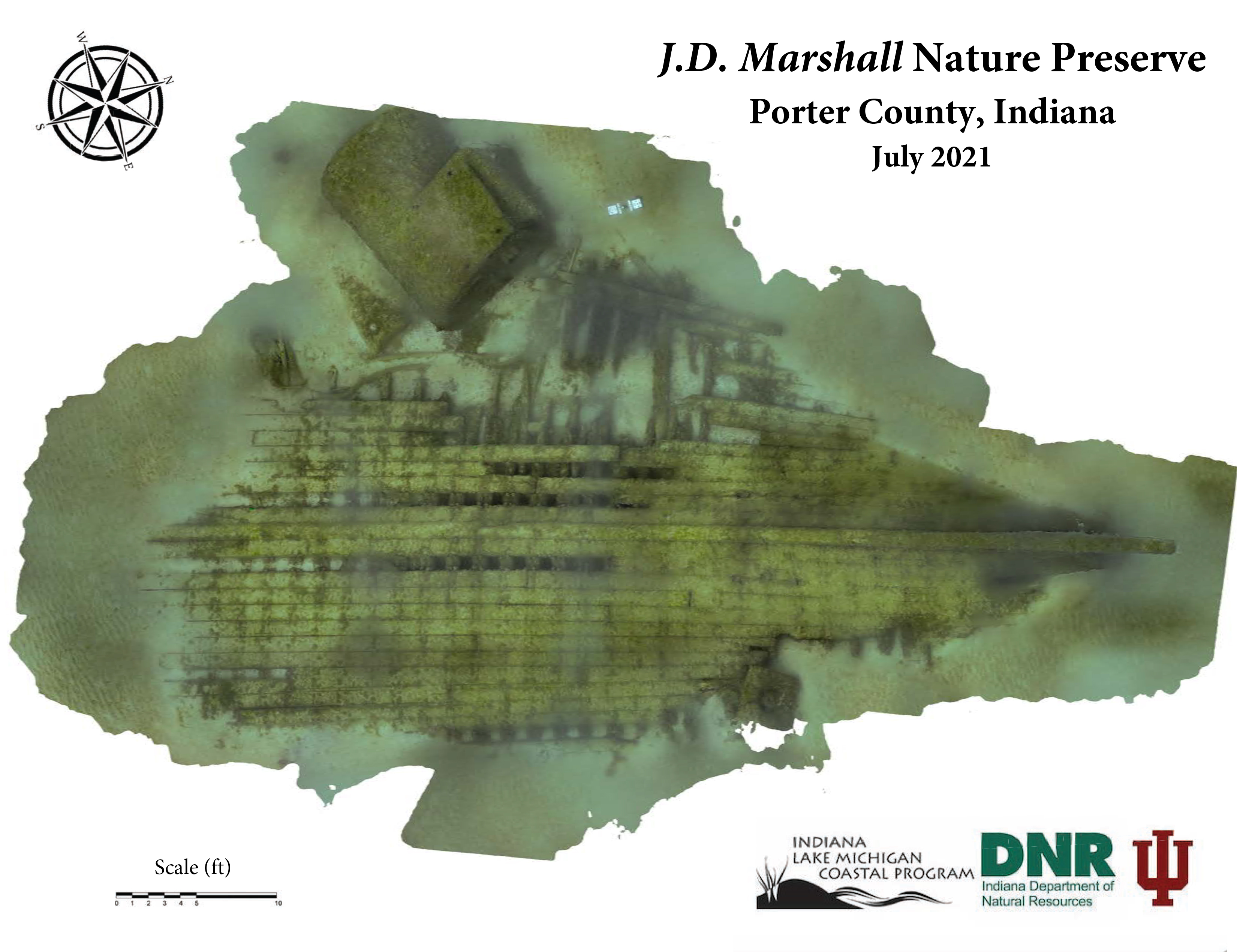IU's recent site assessment indicates the inverted hull is in good condition with the stern post skag, keel, and exterior hull strakes still rising several feet above the surrounding sand beds. Evidence of the cutting for removal the propeller was noted on the remaining drive shaft. The Scotch Boiler remains intact with all features discernable that were documented by Ellis in 1985. Perhaps due to the documented missing bow, breaking of the keel, and subsequent flattening effect, the forward section of the hull has settled into the sand. Nevertheless much of the inverted hull and associated scatter debris remain exposed. Although Ellis survey indicated 116 feet of inverted hull section remains, the forward hull has settled into the lake bed, leaving approximately 85 feet of exposed hull.
When comparing photogrammetric site plans of the J.D. Marshall Nature Preserve from 2019 with the most recent site plan created in July 2021, changes in sand coverage were noted in various places throughout the site, though the total area of exposed shipwreck has relatively remained the same. While the site appears stable when compared to the previous model, sand has been scoured out from around the sternpost and from underneath some of the main hull structure, leaving space between central hull pieces and the lake floor. Some of this sand seems to have been redeposited around the site, such as around the south side of boiler. While these sand shifts alter the site a great deal from a diver’s perspective, they are likely temporary and sand will continue to shift and uncover and recover various portions of wreckage. Comparisons of the 2019 and 2021 orthomosaics show that the wreck does not appear to have ‘splayed’ out, as reported by unidentified community members. Surprisingly, the overall surface area of exposed shipwreck is almost unchanged in terms of overall deck width, deck length, and the position of deck planks.
Most notably, shifting sands seem to have partially or fully exposed a winch mechanism of the J.D. Marshall, documented by Indiana University in July 2021. The winch mechanism was not included in preliminary site surveys conducted by Gary Ellis in 1987. It is highly likely that a large portion of sand was moved from around the winch in the past year, uncovering it almost completely, as IU divers nor conservation officers had seen the mechanism before despite its proximity to Mooring Buoy 2. Images of the feature were collected during IU enhancement dives, in the hope that a model could be constructed in case of future sand coverage.



